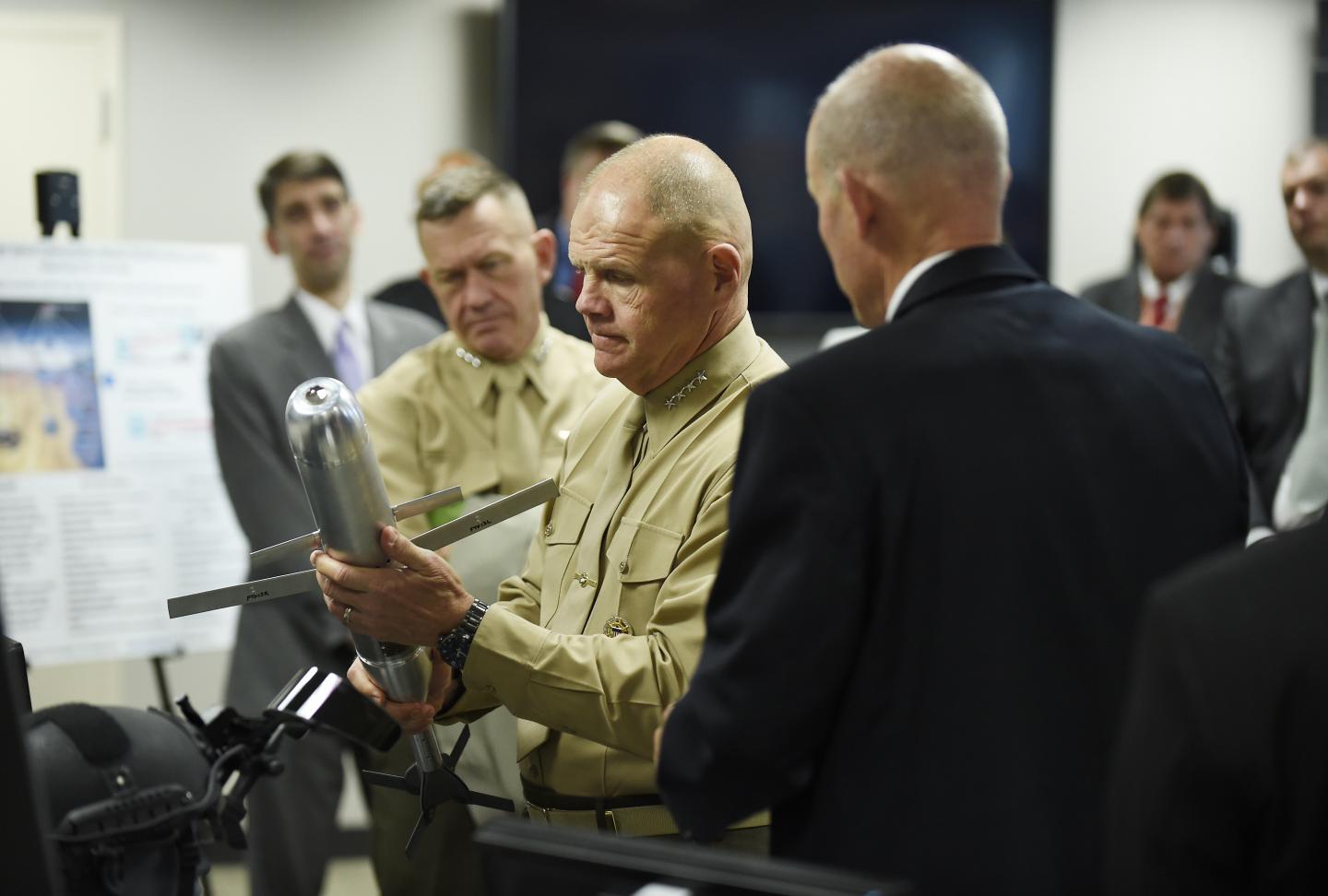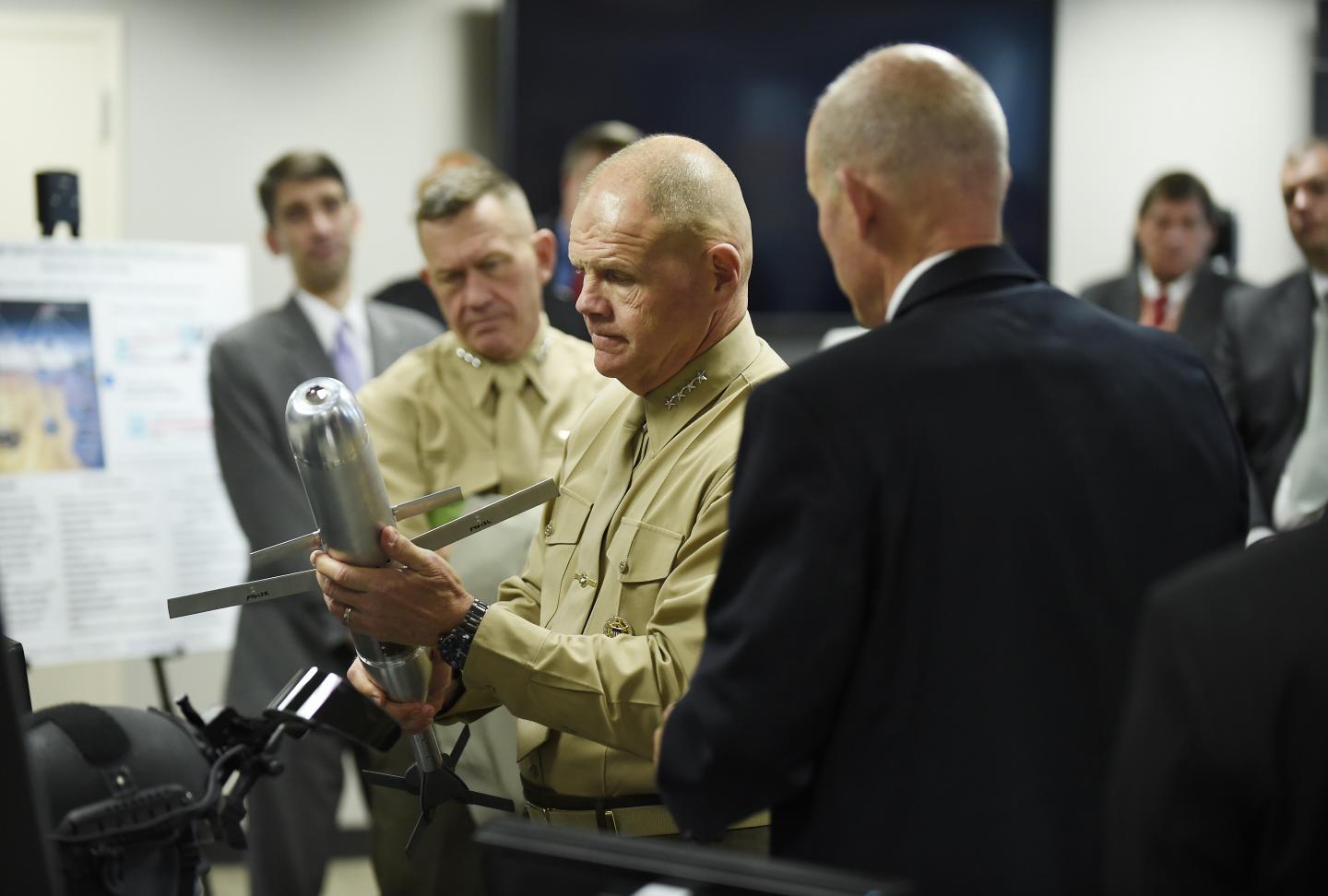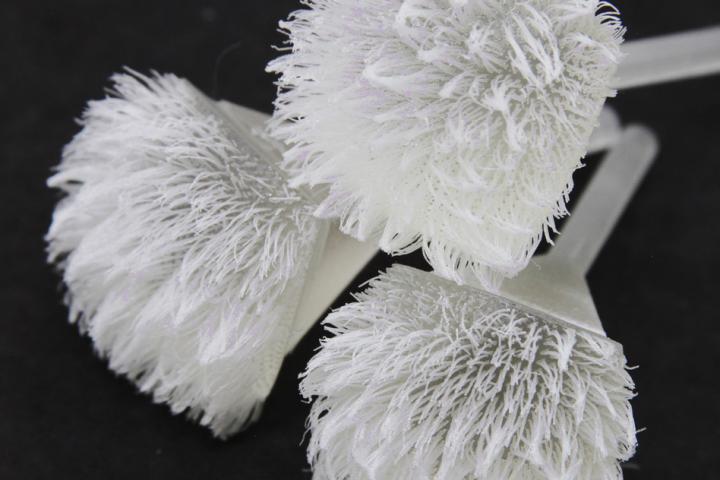
ARLINGTON, Va.–Commandant of the Marine Corps (CMC) Gen. Robert B. Neller recently visited the Office of Naval Research (ONR) to get a close-up look at some of the latest technologies being developed for the U.S. Marine Corps–from autonomous systems to virtual reality training devices.
During his visit, Neller met with Chief of Naval Research Rear Adm. Mat Winter, as well as department heads and program officers, and expressed his appreciation for the science and technology being designed for the future force.
“The Marine Corps and the Office of Naval Research have a long, great history of working together to improve the operational capability of our force, and make sure that on any battlefield, we’re going to come out on top,” he said.
Before going into briefings, the CMC reviewed some of the research and technologies being advanced at ONR, designed to ensure technological dominance for the Marines of today–and tomorrow. Some of those programs included swarming unmanned air vehicles, mobile laser weapons and virtual reality training technologies.
“From a warfighter’s perspective, our ONR mission is quite simply to ensure our Marines and Sailors have the technological advantage in every engagement,” said Winter after the meeting. “We are dedicated to making sure our men and women on the front lines have the unmatched technological edge over any adversary.”
Neller reflected on some of the technological capabilities that will be vital to the Marine Corps of the future. That includes better management of big data–that is, the massive influx of information available to today’s warfighters through shipboard sensors, remote satellites, unmanned vehicles, intelligence collection and other data sources.
“The ability to access big data through our autonomous intelligence” will be of paramount importance, he said.
ONR is currently working on a number of programs on the big data front that could be of great importance for future Marine Corps operational requirements. The data-focused Naval Tactical Cloud, for instance, will integrate large volumes of incoming data from multiple sources; provide afloat intelligence analysis capabilities for Navy and Marine Corps intelligence teams; and provide tactical intelligence support for expeditionary warfare planning and execution, among other uses.
Other priorities highlighted by the CMC include new capabilities in three-dimensional printing–everything from manufacturing difficult-to-find replacement parts for weapons or vehicles, all the way up to creating shelter for Marines in theater, rather than having to find and secure existing facilities. The possibilities for 3D printing that ONR is looking into could also serve to lighten the load for both the individual Marine as well as Marine platforms, a longstanding priority for ONR and the USMC.
And robotic devices and unmanned systems, Neller said, could perform duties that will help reduce risk for Marines on land, at sea or in the air.
Ultimately, he suggested, it will be the front-line users who will best determine what works for the Marines, and what doesn’t.
“We have an active duty Marine Corps unit where we’re going to give these Marines some of these capabilities–like small unmanned air systems with cameras and sensors, certain communications capabilities, certain mobility capabilities–and let them go out and tell us if they have utility or not, give them operational advantage or create a logistical burden,” he said.
Any new technologies will need to be reliable and mobile, he emphasized.
“At the end of the day, they’ve got to be able to be put on a ship, come off a ship, and go ashore.”
###
Media Contact
Bob Freeman
[email protected]
703-696-5031
@usnavyresearch
http://www.onr.navy.mil
The post Big data, 3-D printing and robots: Marine Corps Commandant touts ONR S&T appeared first on Scienmag.




